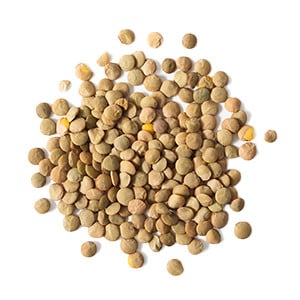Lentils

Lentils
Lens culinaris
Plant family
Legumes (Fabaceae)
Season Overview
Sowing
Harvest
J
F
M
A
M
J
J
A
S
O
N
D
Details
Light requirement
Sunny
Water requirement
Dry
Soil
Light (sandy)
Nutrient requirement
Low
Plant distance
5 cm
Row spacing
20 cm
Seeding depth
3 cm
Instructions
The season for this plant has not yet begun. The following instructions are for the beginning season.
End of March
Sowing
End of March
Weeding
Every two Weeks
End of March
Mulch
Description
Lentils belong to the legume family. The annual, bushy climbing plant reaches growth heights between 20 and 50 cm/7.9-19.9 in. Only the seeds are eaten. Depending on the lentil variety, the size and color of the seeds differ. Roughly, they are divided into "large-seeded" and "small-seeded". As a legume, it is perfect for green manuring. Its roots enter into a symbiotic relationship with nitrogen-fixing soil bacteria. As a result, nitrogen accumulates in the soil. Successive crops, such as high-yielding cabbage crops or cucurbits, benefit from this.
Origin:
Earlier wild forms originated in the Mediterranean and Near East.
Growing tips
Sowing begins in mid-April to early May, depending on the variety. Lentils are plants that are weak in competition. Especially in fertile locations, they are not very tolerant of wild weeds. Therefore, you should loosen and weed the bed before sowing. Be sure to keep the bed free of wild weeds. Lentils are climbing plants and appreciate a support. Dry twigs from the garden or other climbing aids are suitable for this. Depending on when they are sown, harvest begins in mid to late August. Mature lentils have brown discolored pods. The pods ripen from the bottom to the top of the plant. Therefore, you cannot harvest them all at the same time. You have to re-harvest again and again. Let the pods dry and remove the seeds. Then sieve the rest to separate the seeds from the pod remnants.
Companion Plants
Antagonistic Plants
Diseases
No diseases
Pests
Seed beetles
Cutworms
Lentil weevil
Olive Brown Pea Moth
Wireworms